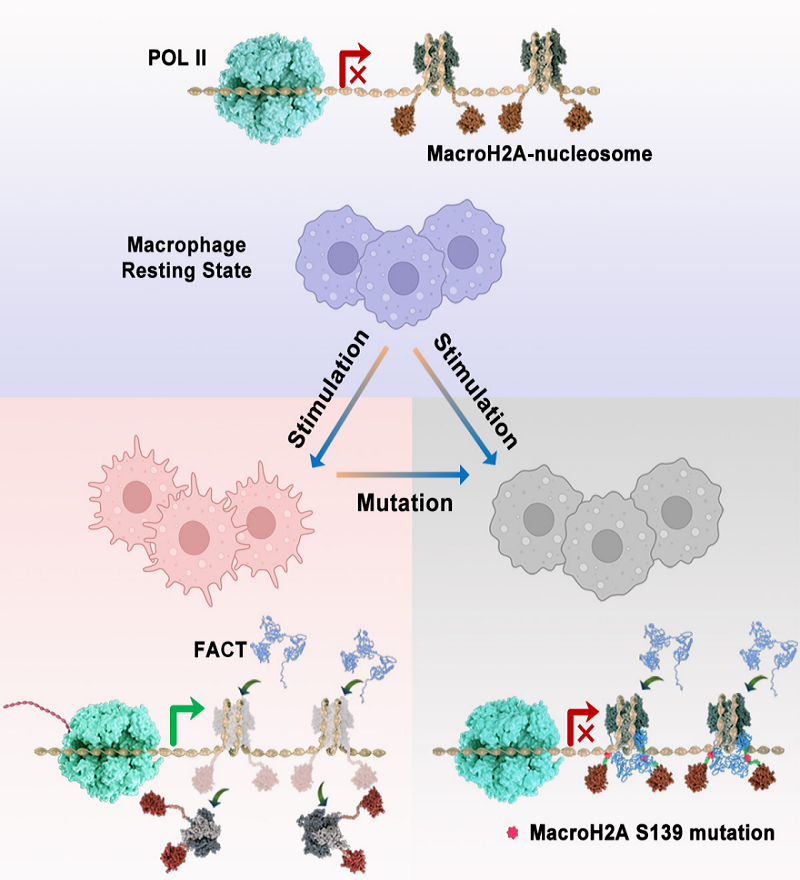Scientists Reveal FACT-mediated Mechanism of MacroH2A Depletion and Its Role in Macrophage Function Regulation
Recently, collaborative research by Prof. LI Wei from the Institute of Biophysics, Chinese Academy of Sciences, and Prof. CHEN Ping from the School of Basic Medical Sciences, Capital Medical University, has unveiled for the first time the molecular mechanism by which the histone variant macroH2A regulates the nucleosome maintenance function of the chaperone Facilitates Chromatin Transcription (FACT) through the critical S139 site, determining that this mechanism plays a key role in gene transcription activation and macrophage functional activation.
As the largest variant of the histone H2A family, macroH2A plays significant regulatory roles in various processes such as X-chromosome inactivation, embryonic development, cellular metabolism, and tumorigenesis due to its unique linker and macro domains. The histone chaperone FACT can clear macroH2A from specific locations on the chromatin, thereby activating gene transcription. However, the core mechanism by which macroH2A regulates gene expression through FACT still requires further elucidation.
The researchers first employed an in vitro nucleosome assembly system, combined with their independently developed magnetic tweezers, the single-nucleosome manipulation technology with high spatiotemporal resolution, to deeply analyze the effects of the macro and linker domains of macroH2A on nucleosome stability and structural dynamics. The study found that macroH2A promotes FACT binding, significantly reduces nucleosome stability, and mediates the depletion of macroH2A from nucleosomes (Figure 1).
Further research revealed that the S139 of macroH2A serves as a key site that regulates the interaction between FACT and macroH2A. In macrophages, mutating the S139 of macroH2A can reshape its localization on the chromatin and alter gene expression levels within the macrophages.
This study combines various technical methods to reveal the crucial role of FACT in mediating the clearance of macroH2A from nucleosomes and ultimately identifies the S139 in the macroH2A linker region as an important site regulating the interaction between the FACT complex and macroH2A.
Published in Molecular Cell, this work clarifies the interaction mechanism between the FACT complex and the variant macroH2A at the molecular level for the first time, providing a theoretical foundation for a deeper understanding of their interaction in gene transcription regulation. It also offers insights into the roles of macroH2A and FACT in regulating macrophage functions (Figure 2).

Fig.1 Employing magnetic tweezers, the interactions between FACT and macroH2A nucleosomes are precisely characterized.
(Image by LI Wei's group)

Fig.2 The molecular mechanisms by which FACT mediates the depletion of macroH2A and regulates gene transcription and macrophage inflammatory responses are elucidated.
(Image by LI Wei's group)
Article link: https://doi.org/10.1016/j.molcel.2024.07.011
Contact: LI Wei
Institute of Biophysics, Chinese Academy of Sciences
Beijing 100101, China
E-mail: weili007@ibp.ac.cn
(Reported by Prof. LI Wei's group)

